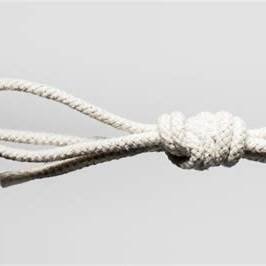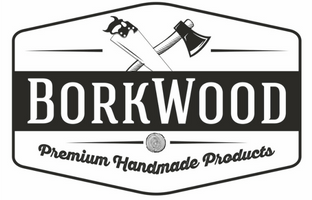The Crock Knot: What It Is and Why It’s Confusing
If you search for “Crock Knot” on the internet, you will see many articles and blog posts. Most of them say it is a strong and useful knot. Some even call it “essential.” They also give step-by-step guides that look easy.
But here’s the problem: the Crock Knot does not appear in real knot books. It is not in The Ashley Book of Knots (the main reference for knots). It is not on AnimatedKnots.com (a trusted knot website). It is not on Wikipedia’s list of knots.
This makes people wonder: is the Crock Knot even real, or is it just a made-up name? Let’s look at what websites say, and then compare it to real knots.
Read also: Slinguri
What Websites Say About the Crock Knot
Here is a simple table that shows how different sites talk about the Crock Knot:
| Website | What They Say It Is | What They Say It’s Used For | Looks Like |
|---|---|---|---|
| Artofzio | A strong, simple knot with loop and wrap | Camping, boating, crafting | A basic hitch or overhand |
| NeonJS | Join two ropes with a loop and pass through | Fishing, sailing, climbing, cargo | Sheet Bend |
| The Hear Up | A binding knot for poles or sticks | Quick ties that can adjust | Clove Hitch / Constrictor |
| Vents Magazine | Good for fishing, secure in water | Mostly fishing | Binding hitch |
| AutoRedline | Overhand knot rolled around itself | Stopper knot | Overhand Knot |
| The Gloworm | Says it is the Trucker’s Hitch | Load securing | Trucker’s Hitch |
| HotBathShop | Says it is a symbol of strength | No tying instructions | Not a real knot |

What They All Have in Common
Even though the guides don’t agree, they all share some ideas:
-
They say it is strong.
-
They say it is useful for many tasks (fishing, camping, cargo, etc.).
-
They show simple steps (make a loop, pass rope, tighten).
-
They are all new articles (2024–2025), which means the word “Crock Knot” has become trendy.
Where They Are Different
The biggest issue is that no one agrees on what knot it really is:
-
Some say it is a binding knot (wrap around a post).
-
Some say it is a stopper knot (like an overhand).
-
Some say it is a bend (used to join two ropes).
-
One says it is a trucker’s hitch (a load-securing system).
-
One even says it is just a symbol, not a real knot.
This is why the Crock Knot is confusing.
The Closest Real Knots
Since the Crock Knot is not an official knot, here are the real knots that match the descriptions:
| Crock Knot Description | Real Knot It Matches | When to Use It |
|---|---|---|
| Wrap around a pole or stick | Clove Hitch / Constrictor | Binding to posts, poles, beams |
| Overhand rolled on itself | Overhand Knot | To stop a rope from slipping |
| Join two ropes | Sheet Bend | To connect two ropes (even if sizes differ) |
| Load securing with tension | Trucker’s Hitch | Tying down heavy loads, cargo, hauling |
| Just a symbol | N/A | Not a knot |
Step-by-Step: How to Tie the Real Knots
Here are short and simple steps for each real knot.
1. Clove Hitch
-
Wrap the rope once around a post.
-
Cross over and wrap again.
-
Tuck under the second loop.
-
Pull tight.
Use: Quick tie on poles or posts.
2. Constrictor Knot
-
Start like a clove hitch.
-
Cross the rope under itself before tightening.
-
Pull very tight.
Use: A stronger, more permanent binding.
3. Overhand Knot
-
Make a loop.
-
Pass the end through the loop.
-
Pull tight.
Use: A stopper knot to stop rope slipping through a hole.
4. Sheet Bend
-
Make a U-shape (bight) in rope 1.
-
Pass rope 2 through the U-shape.
-
Wrap rope 2 around rope 1.
-
Tuck rope 2 under itself and pull tight.
Use: To join two ropes, especially ropes of different sizes.
5. Trucker’s Hitch
-
Make a fixed loop in the rope.
-
Pass the end through the loop and around a hook or post.
-
Pull tight for extra force.
-
Tie off with half hitches.
Use: To tie down cargo tightly, like on trucks or trailers.
Why You Should Be Careful
The Crock Knot is not in official knot lists. This means:
-
❌ It is not a standard knot.
-
❌ Different sites explain it in different ways.
-
❌ It can be unsafe if you use it in climbing or heavy loads.
-
❌ It is probably a new name made for search engines rather than a real knot.
The Safer Option
Instead of learning the “Crock Knot,” learn the real knots it copies:
-
Clove Hitch → for quick pole ties.
-
Constrictor Knot → for strong, permanent binds.
-
Overhand Knot → for simple stoppers.
-
Sheet Bend → for joining ropes.
-
Trucker’s Hitch → for securing loads.
These are well-tested and trusted by sailors, climbers, and campers.
Final Thoughts
The “Crock Knot” looks like an internet invention, not a true knot. Some people describe it as a clove hitch, others as an overhand, a sheet bend, or even a trucker’s hitch. Some just call it a symbol of strength.
If you are serious about knot tying, don’t waste time on unclear names. Instead, learn the real knots that are safe, tested, and used worldwide.
In the end, the Crock Knot might not be real—but the knots it imitates are, and they will never let you down when you need them.

